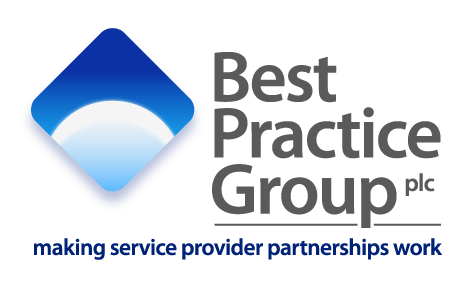The cross-party public accounts committee (PAC) has reportedly ostracised senior government officials for holding back evidence – by as much as eight months – that Europe’s biggest infrastructure project, HS2, was in serious financial difficulty and they allegedly knew full well that both budget and schedule were no longer realistic.
The UK’s high-speed rail link connecting northern and southern regions has been a much-disputed project ever since its inception, so news of issues of this nature are bound to be very uncomfortable for a government with so many other issues on its plate right now.
This does bring up important questions:
- How can you be assured of the accuracy of your own project reporting?
- Are you receiving the right and accurate data?
HS2, a History of Rising Project Costs
In 2009, the Labour government tabled an idea for a high-speed rail link that was to become HS2. First estimates were that this would cost around £37.5bn. The 250mph rail connection was planned to be completed in two parts – Phase 1 would run between London and Birmingham, and Phase 2 would fork off between Birmingham and Crewe, and Birmingham and Leeds via Manchester.
However, the costs have had to be regularly revised since then.
In 2019 HS2 chairman Allan Cook suggested these costs may have doubled to between £72.1 and £78.4bn (in 2015 prices) due to challenging ground conditions; however, an independent review has suggested that this may more realistically be between £100 and £110bn due, among other things, to underestimations on the amount it will cost to buy properties along the route and hundreds of miles of tunnels to satisfy environmental groups.
According to the Institute for Government, alongside ill-considered optimism regarding the amount of contingency that may be required on the project, the scope has changed over the years and additional structural reinforcement was needed before laying tracks. This has also resulted in a schedule creep as initially the project was due to be completed by 2033, but this has now been estimated at 2040.
Criticism has also been made of the £46,000 bonus that was reportedly paid to the chief executive of HS2 Ltd, which was apparently for his “control of the project’s finances”.
Project Cost and Schedule Overruns -The 8-year Delay
According to The Times, the PAC report said that “both the DfT and HS2 Ltd were aware of the scale of the project’s cost and schedule overruns as early as October 2018”.
However, it seems from the report that while the DfT’s permanent secretary had every opportunity to make this clear when she appeared before the committee in May 2019, she failed to do so despite being specifically asked about the programme’s budget and schedule.
The Times article also said that “HS2 Ltd’s” own annual report and accounts for the year ending March 2019 “similarly failed to give an accurate account of the programme’s problems”.
Why Good People can Sometimes Mislead
We’d all like to imagine that our own people have full integrity, are loyal to the organisation, and managed well to encourage clarity and transparency on every project. However, individuals can be influenced by many factors that can lead to misleading statements.
Research into why good people can sometimes mislead suggests five common reasons:
-
- Self-preservation
Where a team member believes they have been even partially responsible for an issue, they may sweep it under the metaphorical carpet to avoid or delay being found out for fear of the resulting ramifications.
-
- The easy option
Poor training or observation skills, or simply someone in the wrong role or with too much on their plate, can lead to mistakes that may be difficult to admit to, with some preferring to let the error stand instead.
-
- Pride and reputation
Maybe you’re a high-flyer with a perfect record that you don’t wish to blemish or you’ve had challenges before and worry this may be your ‘third strike’; maybe it’s just not in your nature to admit when you’re wrong or you simply worry too much what colleagues will think of you.
-
- Depletion
In some situations, stating the facts as they are can be a challenge rather than a default. If there are influences in an individual’s environment – people, stress, money troubles, exhaustion – that are putting pressure on them, their ability to resist the temptation of misleading others can be depleted over time.
-
- Peer pressure
An environment where being misleading on the facts goes unchecked can mean pressure on others to join in, to follow influential individuals down the wrong path. Fighting this comes from strong governance, but peer pressure is a very real issue that can make otherwise factual individuals commit misleading behaviours.
Areas to Consider to Validate Project Reporting
If you aren’t receiving the facts objectively, then you’ll need external assurance of the following ten areas on a minimum of a quarterly basis, subject to the voracity of the project financial run-rate.
- Client and Scope
- Managing the baseline
- Documenting client criteria
- Defining and documenting project scope
- Establishing the project environment
- Agreeing and documenting project deliverables
- Defining and managing expected benefits
- Agreeing and documenting acceptance process and success criteria
- Clarifying sponsor and client obligations
- Client readiness for acceptance and implementation of solutions
- Management of requirements
2. Risks and Opportunities
- Management process
- Phase initiationRisk and opportunity identification and assessment
- Plan responses
- Implement responses
- Contingency
- Business contingency (e.g. disaster recovery)
3. Planning and Scheduling
- Integrated set of approaches
- Schedule integrity
- Project controls
4. Organisational Capability and Culture
- People and the profession
- TeamworkProcess and systems
- Working environment
- Leadership
- Non-people resources
5. Supply Chain
- Contract strategy
- Procurement strategy and process
- Contract management
6. Solution
- Approach to developing the solution
- Design of solution or service
- Solutions development management
- Business change planning
- Quality control
- Release management
- Implementation of solution
- Configuration management
7. Finance
- Procurement
- Contract administration
- Financial controls
- Cash flow
- Funding
8. Social Responsibility and Sustainability
- Social responsibility aspects of scope
- Health, safety and security
- Society
- Ecological and physical environments
- Economy
9. Performance
- Approach to managing performance
- Performance measurement
- Holistic performance
- Escalation
10. Governance
- Management and governance of projects
- Sponsorship and project direction
- Sponsors
- Administration of governance arrangements
- Project status reporting
- Stakeholder management
- Project manager and staff
- Issue escalation and conflict management
- Business readiness for change
- Independent assessment and scrutiny
- Project closure.
Conclusion
According to The Times article, the government has agreed “to deliver updates on the scheme’s costs and delivery every six months as part of a plan to bring HS2 under control”.
Despite the PAC report’s lack of confidence that the department in charge is doing enough to halt the rising costs of the project, HS2 still has plenty of support for the benefits it is supposed to bring with it. These include contributing to a lessening of the ‘north-south divide’, providing a far faster business travel corridor opening up more office location choice beyond London and the south-east. It will lessen pressure on other overcrowded lines, and it will free up space on those lines for more freight trains that will remove thousands of HGVs from the motorways. However, questions remain over whether HS2 offers value for money as a project.
There are many reasons why people can get creative with the truth and mislead others. This behaviour is really challenging to stop completely if there is a ‘witch hunt’ culture within your organisation. The immediate opportunity you have is to follow the five-step process that builds commercial trust, along with tightening up and improving the ten areas noted, so you receive more accurate insights and control to encourage greater transparency from your reporting.
Photo Credit: iStock


